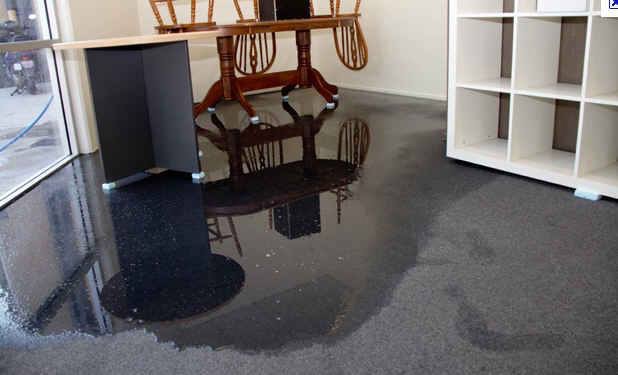Flooding can happen at any time and can cause significant damage to your home and also damage your floor’s carpet. It is important to take quick action to prevent further damage and to begin the carpet cleaning & restoration process. In this blog, we will discuss about Tips for Responding to Flood Damage in Your Home.
Importance Of Quick Action In Responding To Flood Damage In Your House-

Floods can happen quickly and can cause significant damage to homes and businesses. That’s why it’s so important to take quick action in responding to flood damage. If you wait too long to take action, the damage can become much more severe, leading to a longer and more expensive restoration process. Here are some of the key reasons why quick action is so important. Hire Flood Damage Restoration Surfers Paradise company to get effective & quality flood restoration results.
Preventing secondary damage: The longer water is allowed to sit in your home, the more likely it is to cause secondary damage, such as mould growth and structural damage. This can make the restoration process much more expensive and time-consuming. Taking quick action to remove the water and dry the affected areas. You can prevent secondary damage and minimize the long-term impact of the flood.
Saving valuable possessions: If you have valuable possessions, such as family photos, important documents, and furniture, it’s important to take action quickly to minimize the damage. The longer these items are exposed to water, the more likely they are to be damaged beyond repair.
Protecting your health: Flood water can contain harmful pollutants and contaminants, such as bacteria and chemicals, which can pose a serious risk to your health. Quick action to remove the water and disinfect the affected areas can help to minimize the risk of exposure and protect your health.
Limiting the spread of damage: The longer water is allowed to sit in your home, the more likely it is to spread and cause additional damage. Quick action to remove the water and dry the affected areas can help to limit the spread of damage and prevent it from becoming more severe.
Reducing the cost of restoration: The longer you wait to take action, the more expensive the restoration process is likely to be. Quick action to remove the water, dry the affected areas, and repair the damage can help to reduce the cost of restoration and minimize the long-term impact of the flood.
Preventing insurance claims from being denied: If you wait too long to take action, your insurance claim may be denied. Insurance companies typically require prompt reporting of damage and a quick response to minimize the damage. By taking quick action, you can ensure that your insurance claim is processed smoothly and that you receive the financial support you need to restore your home.
Tips for Responding to Flood Damage in Your Home
Flood damage can be a traumatic experience, but by taking the right steps, you can minimize the damage and get your home back to normal as quickly as possible. Here are some tips for responding to flood damage in your home:
Stay safe: Your safety should be your top priority when responding to flood damage. Avoid entering a flooded area if there is any possibility of electrical shock or if the water is contaminated. If you need to enter a flooded area, wear protective clothing, such as boots and gloves, to minimize the risk of exposure to harmful pollutants.
Turn off the electricity: If the flood has affected any electrical systems in your home, turn off the electricity to avoid the risk of electrical shock. Do not turn the electricity back on until a professional electrician has inspected the electrical systems and declared them safe.
Document the damage: Take photos and videos of the damage to document the extent of the damage and to support any insurance claims.
Remove standing water: If there is standing water in your home, remove it as quickly as possible using a submersible pump or professional-grade equipment. This will help to prevent secondary damage and minimize the risk of mould growth.
Dry the affected areas: Once the water is removed, the affected areas need to be thoroughly dried to prevent mould growth and secondary damage. Use industrial-strength fans, dehumidifiers, and air movers to dry the affected areas as quickly as possible.
Disinfect and sanitize: Flood water can contain harmful pollutants and contaminants, so it’s important to disinfect and sanitize all the affected areas. Use specialized equipment and techniques to ensure that all contaminants are removed and the area is safe to live in.
Repair and restore: Once the affected areas have been dried and disinfected, it’s time to repair & restore the damaged areas. This may include repairing or replacing damaged walls, flooring, and electrical systems. Use professional-grade materials and techniques to ensure that the repairs are done properly and will last for the long term.
Address mould growth: If mould has developed as a result of the flood, it’s important to address it as soon as possible. Mould can be hazardous to your health and can cause extensive damage if not treated promptly. A professional mould remediation company can assess the extent of the mould growth, remove it, and take steps to prevent it from returning.
Protect against future floods: Finally, it’s important to take steps to protect your home against future floods. This may include installing a sump pump, backflow preventer, and flood barriers, as well as taking steps to improve the overall flood resistance of your home.
Where To Hire Professionals?
The best way to restore or prevent your house from flood damage is by hiring professionals. If you are searching for professional flood damage restoration services in Surfers Paradise, you can appoint experts at Carpet Cleaning Surfers Paradise. We can help you with top-class flood damage prevention and restoration services. Anyhow, you have to take quick action.
